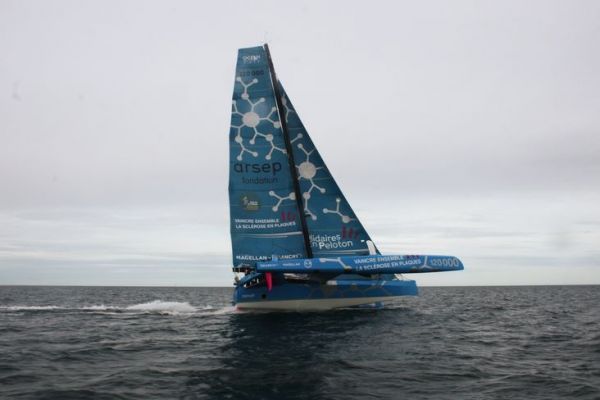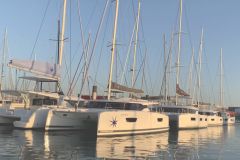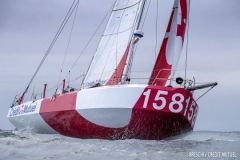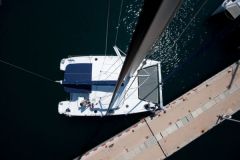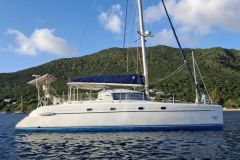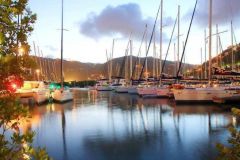The stability of the ship, a complex phenomenon
When designing a boat, one of the obvious goals is to keep it upright. While this may seem like a silly thought, it has taken shipbuilders and naval architects a long time to really understand the phenomena involved, to model them and to be able to calculate and anticipate them. The famous story of the sinking of the Vasa as soon as it was launched.
By dint of experience, mathematical formulas, which we will not go into here, have been developed to estimate the ability of a boat to regain its equilibrium, characterized by its so-called righting moment. In brief, the curve represents graphically the effort necessary to make the boat tilt according to its heel angle.
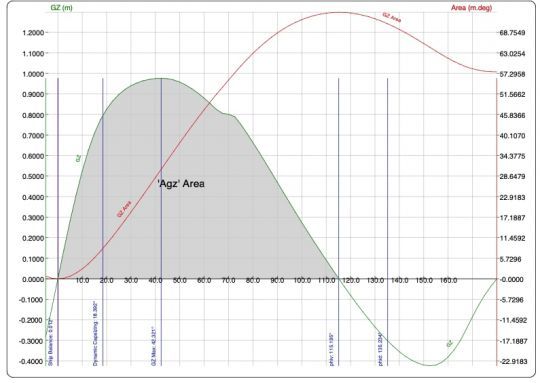
Its calculation highlights 2 key factors, which are called shape stability and weight stability.
The shape of the hull, the first guarantee of stability
If you take two boats of the same weight, but draw different hull shapes, their stability will differ. A round, long and narrow tree trunk will not behave the same way as a wide and short tub, which is much more difficult to heel, at least at the beginning.
Width is a key element. A narrow boat heels gradually and will accept strong angles without turning over. On the contrary, a wide boat will be very stable at small angles of heel, before generally capsizing more abruptly. Mathematically, stability is related to the inertia of the boat's waterline relative to its axis. The extreme case is that of a multihull, very wide, but which suddenly loses stability when it raises a hull and thus loses inertia of its waterline.
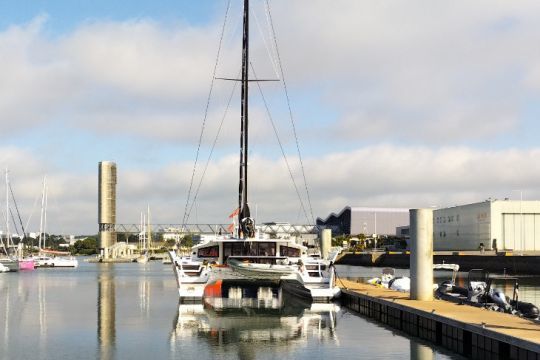
To gain in stability of form, one will thus seek to widen the hulls or to add floats. In commercial ships, it happens that ferries, getting heavier with equipment in time, are "blown", that is to say receive some kind of additional bulges on the sides at the waterline to recover stability.
Lester the boat, in the right place!
The other guarantee of stability is the weight. Again, you have to put it in the right place. Once again, instinct tells us that putting a rock at the top of the mast is not a good idea, and the calculations confirm this! It is actually the mass and the distance between the center of gravity and the center of the hull, i.e. the center of the submerged volume, that define the righting moment.
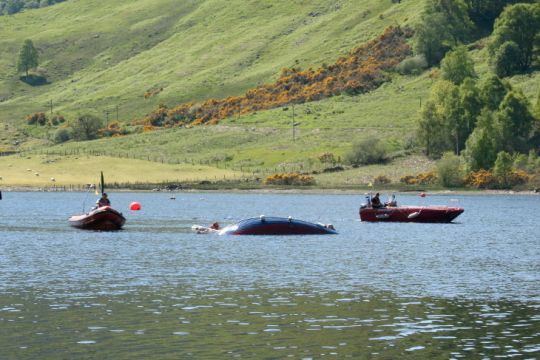
It was probably this propensity for decoration, placed high to be visible, that caused the sinking of the Vasa. Sailors quickly realized that their ships without cargo were likely to overturn, and tended to weight them down with rocks in the bilge. Gradually, the keel, which designates the structural part longitudinal to the axis of the boat, also came to assume the function of ballast, ideally placed at the bottom of the boat. Modern bulbous sailboats concentrate the weight at the bottom, choosing dense materials such as cast iron or lead. The heavier the boat and the lower its center of gravity, the more stable it is.
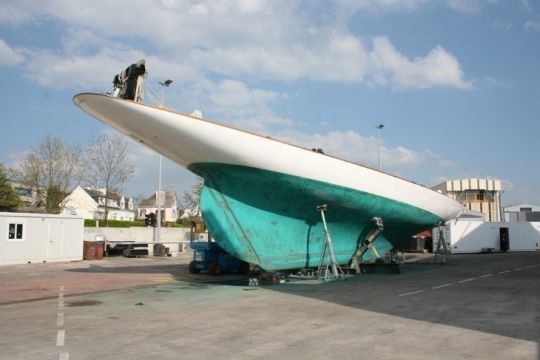
A history of compromise
Naval architecture is the art of compromise. Taking into account the requirements of life on board, performance and taste, it will be necessary to balance stability of form and stability of weight. The "ballasted lanes", the deep keel, heavily ballasted yachts designed by the British for the America's Cup, were in contrast to the American "Champagne Cups" that emphasized stability of form in the late 19th and early 20th centuries. By understanding the basics of stability, the yachtsman will be able to choose more easily between a small draft boat with a strong displacement or a light boat with a large draft, and the 50 nuances between the two!

 /
/ 